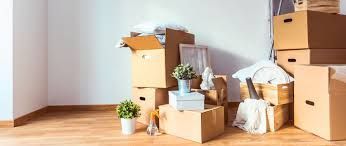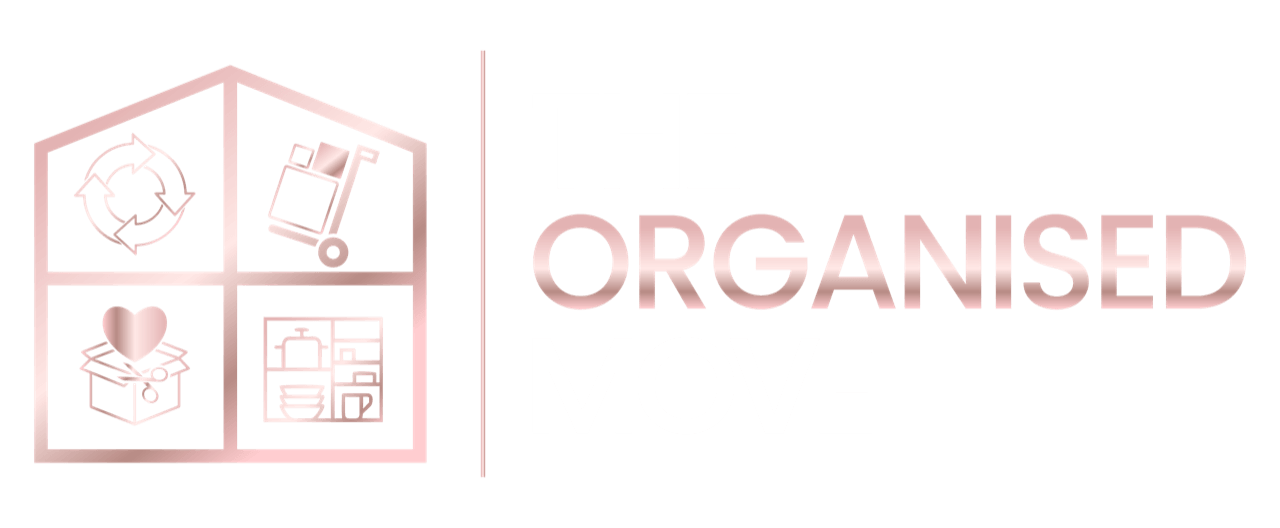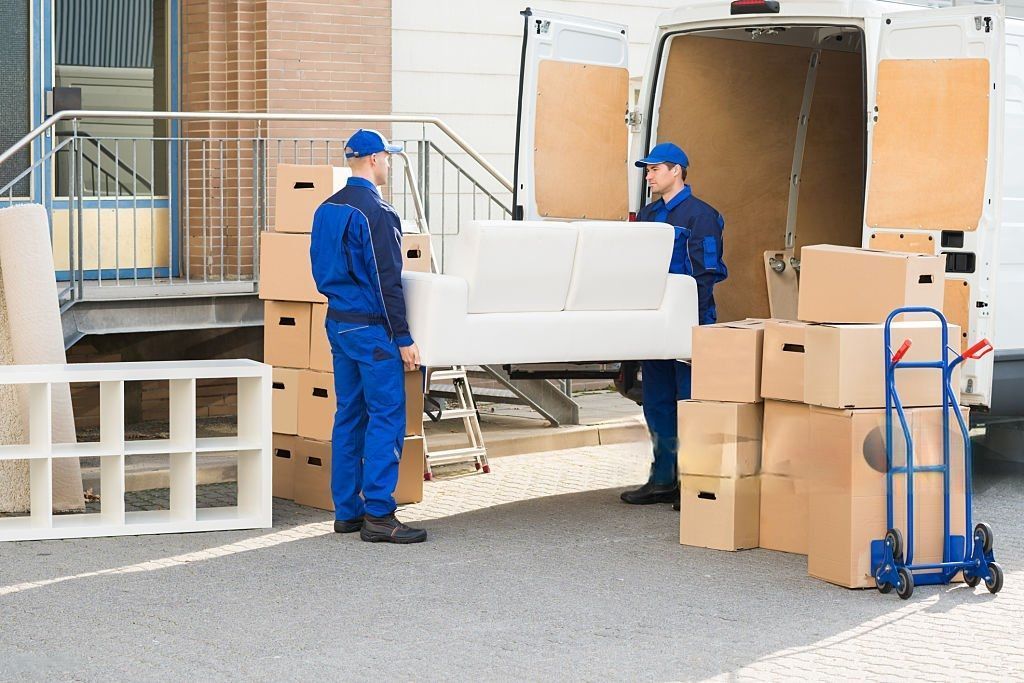GET A FREE CONSULTATION AND INFORMATION SESSION- CALL US +61 411 319 381
Blog
Blog

February 25, 2025
Moving to a new home or office can be an exciting yet overwhelming experience. The logistics of packing, transporting, and unpacking your belongings can quickly become stressful and time-consuming. This is why choosing a removalist service that also provides professional packing and unpacking services can make all the difference. In Sydney, where fast-paced living leaves little time for the finer details of moving, finding a comprehensive removalist service ensures a smooth and stress-free transition. Why Choose a Removalist That Offers Packing and Unpacking Services? 1. Convenience and Time-Saving Packing an entire home or office is a daunting task that requires careful planning. Professional packers streamline the process, using efficient techniques and quality packing materials to secure your belongings. By hiring a removalist who offers packing services, you save valuable time and energy that can be better spent on other important moving tasks or settling into your new space. 2. Ensuring the Safety of Your Belongings Packing isn’t just about placing items into boxes—it’s about ensuring their safety during transit. Professional packers are trained to handle delicate items such as glassware, antiques, and electronics with care. They use appropriate materials such as bubble wrap, packing paper, and sturdy boxes to minimize the risk of damage. This level of expertise provides peace of mind that your possessions will arrive intact. 3. Efficient Use of Space Experienced packers know how to maximize space within boxes and the moving truck. This reduces the number of boxes required, ultimately lowering moving costs and ensuring that the removal process is efficient. A well-packed truck also minimizes movement and prevents damage during transit. 4. Reduced Stress and Physical Strain Moving involves a significant amount of heavy lifting, which can lead to strain or injury. Professional removalists handle this physically demanding task, allowing you to avoid the physical toll of moving heavy furniture and boxes. 5. Insurance and Liability Coverage A key benefit of hiring a full-service removalist is that many reputable companies offer insurance coverage for packed items. This means that in the unlikely event of damage, your belongings are protected. Self-packed items, on the other hand, may not be covered under a removalist’s insurance policy. The Advantages of Unpacking Services While packing is a crucial part of the move, unpacking can be just as challenging. After a long day of moving, the last thing you want to do is sift through boxes trying to find essentials. Removalists that offer unpacking services make settling into your new home effortless. 1. Faster Setup and Organization Unpacking services allow you to settle into your new space quickly. Professional unpackers place items where they belong, ensuring that your kitchen, bedrooms, and living areas are set up efficiently. 2. Debris Removal and Cleanup A major benefit of hiring an unpacking service is that they remove all packing materials, leaving your new home clean and clutter-free. This means you won’t have to worry about disposing of boxes and packing materials yourself. 3. Customised Unpacking Solutions Many professional removalists tailor their unpacking services to suit your specific needs. Whether you want assistance with only certain rooms or a full-home setup, you can choose a package that works best for you. Choosing the Right Removalist in Sydney When searching for the best removalist in Sydney, look for companies that offer comprehensive services, including: Experienced and trained packers who ensure the safe handling of all items. High-quality packing materials to protect fragile belongings. Flexible service options that cater to your specific moving needs. Insurance coverage for added protection and peace of mind. Positive customer reviews indicating reliability and professionalism. Final Thoughts Moving is a significant life event, and hiring a removalist that offers both packing and unpacking services can transform a stressful experience into a seamless transition. The best removalists in Sydney go beyond transportation—they handle every aspect of the move so you can focus on settling into your new home or office without the hassle. If you’re planning a move and want a stress-free experience, consider hiring a professional removalist with full-service packing and unpacking options. Your future self will thank you!

January 1, 2025
Moving to a new home or reorganizing your space can feel like a daunting task. From managing time constraints to ensuring everything has its place, the process can easily become overwhelming. That’s where a professional organising service in Sydney can make a world of difference. At The Organised Move, we specialize in helping Sydneysiders simplify their lives through expert organisation solutions tailored to meet their unique needs. Here’s why hiring a professional organising service is a game-changer for your home or business. Save Time and Energy Sydney life is fast-paced, leaving little room to tackle time-consuming tasks like decluttering, packing, or reorganizing. Professional organisers streamline the entire process, helping you focus on what matters most—whether that’s family, work, or enjoying your new space. With a clear plan and efficient systems, our team ensures every minute is productive, turning a stressful project into a smooth and seamless experience. Reduce Stress During Moves Moving house can be one of the most stressful life events. From sorting through years of accumulated belongings to packing efficiently, the process is no small feat. A professional organising service takes the stress off your shoulders by: Decluttering and sorting items before the move. Packing with precision to ensure nothing gets damaged. Unpacking and arranging items in your new space for optimal functionality. By leaving the logistics to the experts, you can settle into your new home with ease. Maximise Space and Functionality Sydney homes often face challenges like limited space or awkward layouts. Professional organisers bring creative solutions to the table, optimizing your space to work better for your needs. Whether it’s designing a more efficient kitchen, creating a functional home office, or maximizing storage in a small apartment, our services ensure every square metre of your space works for you. Expert Decluttering Guidance Decluttering can be emotionally overwhelming, especially when dealing with sentimental items or years of accumulated belongings. Professional organisers provide unbiased guidance, helping you make decisions with confidence. At The Organised Move, we approach decluttering with sensitivity, ensuring the process is both productive and empowering. By the end, you’ll feel lighter, more organized, and ready to embrace a clutter-free lifestyle. Tailored Solutions for Every Client No two homes—or clients—are the same. Professional organising services are designed to meet your specific needs and preferences. Whether you’re a busy professional, a growing family, or downsizing, our team develops custom solutions to suit your lifestyle. From creating colour-coded filing systems to implementing smart storage solutions, every detail is designed to simplify your life. Long-Term Benefits for Your Well-Being An organized space isn’t just visually appealing—it also has a profound impact on your mental well-being. Studies show that decluttered and well-organized environments can: Reduce anxiety and stress. Boost productivity and focus. Improve overall quality of life. With The Organised Move, you’re not just investing in a tidy space—you’re investing in a calmer, more efficient lifestyle. Ideal for Busy Sydneysiders Sydney residents juggle demanding schedules, from work commitments to family life. A professional organising service steps in to handle the heavy lifting, allowing you to reclaim valuable time. Our expertise in managing projects of all sizes means you can trust us to deliver results, whether you’re preparing for a move, reorganizing your home, or simply looking to regain control of your space. Conclusion: Your Path to an Organised Life Hiring a professional organising service in Sydney is one of the most practical and impactful decisions you can make for your home or business. At The Organised Move, we pride ourselves on delivering tailored solutions that simplify your life, reduce stress, and create spaces you love. Ready to transform your space? Contact Us to learn more about our services and book your consultation today.

December 1, 2024
Moving to a new home or office is an exciting experience, symbolizing fresh beginnings and opportunities. However, the process of settling in often comes with a significant challenge: unpacking. After the heavy lifting of moving day, the sight of countless boxes can be overwhelming, leaving many unsure where to start. This is where an unpacking service becomes invaluable, transforming a stressful task into a seamless transition. Save Time in Your Busy Schedule Unpacking is a time-intensive process that can take days—or even weeks—if done alone. Between work, family, and other commitments, finding the time to sort through boxes, organize items, and arrange furniture can feel impossible. An unpacking service streamlines the process, ensuring your belongings are unpacked and arranged quickly and efficiently, allowing you to enjoy your new space without unnecessary delays. Minimize Stress Moving is one of life’s most stressful events, often involving a mix of physical exhaustion and emotional upheaval. After a long day of relocating, the last thing anyone wants is to dive into piles of boxes. Professional unpacking services alleviate this stress by handling the workload for you. With their expertise, you can focus on enjoying your new environment rather than worrying about the chaos of unpacking. Create a Functional, Organized Space One of the biggest challenges of unpacking is deciding where everything should go. Professionals in unpacking services bring organizational skills and experience, ensuring your belongings are arranged logically and efficiently. Whether it’s setting up your kitchen for easy use, organizing your wardrobe, or creating a functional workspace, they take the guesswork out of creating an orderly and practical living area. Protect Fragile and Valuable Items Unpacking involves handling delicate items like glassware, artwork, and electronics, which require special care. Professional unpackers are trained to handle fragile belongings safely, reducing the risk of damage during the unboxing process. Their expertise ensures your cherished possessions are treated with care and placed securely in your new space. Faster Transition to Your New Life The sooner your belongings are unpacked and organized, the sooner you can settle into your new routine. Professional unpacking services help you transition smoothly, allowing you to focus on decorating, exploring your neighborhood, or simply relaxing in your new home. Tailored to Your Needs Unpacking services are highly customizable, catering to your specific requirements. Whether you need help with just one room or the entire house, professionals can adjust their approach to meet your needs. They can also provide additional services, such as assembling furniture or discarding packing materials, making your move even more convenient. A Worthwhile Investment While some may view unpacking services as a luxury, they’re an investment in your time, peace of mind, and the overall success of your move. By outsourcing this task, you save yourself from unnecessary stress and ensure your new space is set up exactly the way you want it from the start. Conclusion An unpacking service is more than a convenience—it’s a practical solution that turns the chaos of moving into a smooth, stress-free experience. By entrusting professionals with this crucial step, you can save time, protect your belongings, and start enjoying your new space sooner. Whether you’re moving into a cozy apartment or a large family home, an unpacking service is an invaluable tool for making your transition effortless and enjoyable.

October 2, 2024
In today’s fast-paced world, our homes and workspaces can easily become cluttered with excess belongings, creating a sense of overwhelm and disorganization. Clutter can take many forms, from unused household items and paper documents to digital files and mental distractions. Decluttering isn’t just about tidying up; it’s about creating a more organized, productive, and peaceful environment. In this detailed guide, we will explore the importance of decluttering, the benefits of a clutter-free life, and a step-by-step process for decluttering different areas of your life. By following these strategies, you can enjoy a more focused, serene, and efficient lifestyle. 1. Why Decluttering Matters Clutter can have a significant impact on both mental and physical well-being. Research has shown that a cluttered environment can lead to increased stress, decreased productivity, and difficulty focusing. Conversely, a clean and organized space promotes a sense of calm, helps streamline daily tasks, and boosts mental clarity. The key benefits of decluttering include: Reduced stress: A clutter-free environment creates a sense of order, which can reduce feelings of anxiety and stress. Increased productivity: When everything is in its place, it's easier to find what you need, saving time and increasing efficiency. Improved focus: A clean, organized space helps to eliminate distractions, allowing you to concentrate better on important tasks. Better decision-making: With fewer distractions and more mental clarity, you can make better decisions. Enhanced well-being: Decluttering can improve your mental health, making you feel more relaxed and in control of your surroundings. Now that we understand the importance of decluttering, let’s dive into the steps for decluttering effectively. 2. Step-by-Step Guide to Decluttering Effectively Decluttering can seem like a daunting task, especially if you have accumulated years' worth of possessions. However, by breaking the process down into manageable steps, you can make decluttering an achievable and even enjoyable experience. Here's a step-by-step guide to help you get started. Step 1: Set Clear Goals and Prioritize Areas Before you begin decluttering, take some time to define your goals. Are you looking to organize a specific area, like your home office, or do you want to declutter your entire house? Setting clear goals helps you stay focused and motivated. Prioritize areas that need attention: High-traffic areas: Start with spaces you use most often, such as the kitchen, living room, or office. These areas tend to accumulate clutter quickly. Storage spaces: After tackling high-traffic areas, move on to storage spaces like closets, cabinets, and drawers. Sentimental items: Save sentimental or emotionally charged items for last, as they can be more difficult to sort through. Example goal-setting: Declutter the kitchen to make meal prep more efficient. Organize the home office to create a productive workspace. Clear out the garage to create additional storage space. Step 2: Gather Supplies To declutter effectively, you’ll need some basic supplies: Boxes or bins: Label four boxes or bins with “Keep,” “Donate,” “Sell,” and “Trash.” This will help you sort items as you go. Trash bags: For anything that’s broken, worn out, or no longer useful. Cleaning supplies: As you declutter, take the opportunity to clean surfaces and refresh the space. Step 3: Tackle One Area at a Time It’s easy to get overwhelmed if you try to declutter everything at once. Instead, focus on one area at a time, completing it fully before moving on to the next. This will make the process more manageable and give you a sense of accomplishment along the way. Examples of areas to tackle: Clothes and closets: Go through your wardrobe and donate or sell clothes you no longer wear. Ask yourself, “Have I worn this in the past year?” If the answer is no, it’s time to let it go. Kitchen: Sort through utensils, appliances, and pantry items. Get rid of duplicates and expired food. Home office: Organize paperwork, office supplies, and digital files. Shred old documents and delete unnecessary files. Living room: Declutter surfaces such as coffee tables, shelves, and entertainment centres. Donate or sell items that no longer fit your style or needs. Step 4: Use the Four-Box Method As you declutter each area, use the four-box method to help make decisions about what to keep and what to discard: Keep: Items that you use regularly or that have significant value. Donate: Items that are in good condition but no longer serve a purpose for you. Consider donating to local charities or community organizations. Sell: Items of value that you no longer need. Consider selling them online or at a garage sale. Trash: Items that are broken, worn out, or no longer useful. This method helps you stay organized and avoid getting bogged down in decision fatigue. Step 5: Apply the “One In, One Out” Rule To prevent future clutter, adopt the “one in, one out” rule. This means that for every new item you bring into your home, you must remove an old one. This rule encourages mindful consumption and prevents accumulation over time. For example: If you buy a new pair of shoes, donate or sell an old pair. If you bring home a new gadget, get rid of an older one that you no longer use. By applying this rule consistently, you can maintain a clutter-free environment without feeling deprived. Step 6: Organize What You Keep Once you’ve decluttered an area, take the time to organize what remains. Invest in storage solutions that fit your space and lifestyle. Consider using baskets, bins, and drawer dividers to keep items neat and accessible. Tips for effective organization: Store like items together: Group similar items in one place so they are easy to find when needed. For example, keep all kitchen gadgets in one drawer, or organize your office supplies in labeled containers. Use vertical space: Take advantage of wall-mounted shelves, hooks, and cabinets to free up floor space. Label storage bins: Clearly label bins and containers to avoid confusion and ensure items stay organized. Step 7: Maintain a Decluttered Space After decluttering and organizing, it’s important to establish habits that will help you maintain your newly organized space. Set aside time each week or month to tidy up and reassess areas that may need attention. Simple maintenance tips: Daily reset: Spend 10-15 minutes each day putting things back where they belong and tidying up high-traffic areas. Regular purges: Schedule seasonal or annual decluttering sessions to go through items that may no longer serve you. Stay mindful of purchases: Before buying new items, ask yourself if they are truly necessary and if they will add value to your life. 3. Special Decluttering Challenges and Solutions Some types of clutter require specific approaches. Here’s how to tackle common decluttering challenges: a) Digital Declutter In today’s digital age, clutter isn’t limited to physical spaces. Many people struggle with a disorganized inbox, an overflowing desktop, and an endless stream of notifications. A digital declutter can free up mental space and increase productivity. Steps for digital decluttering: Inbox cleanup: Unsubscribe from newsletters and promotional emails you no longer read. Organize emails into folders and archive older messages. Desktop organization: Delete unused files, organize documents into folders, and clear your desktop of unnecessary icons. App management: Delete apps on your phone or computer that you no longer use. Organize remaining apps into folders for easy access. b) Sentimental Items Decluttering sentimental items can be emotionally challenging, as they often hold significant personal value. However, keeping too many mementos can lead to unnecessary clutter. The key is to strike a balance between preserving memories and maintaining an organized space. Tips for decluttering sentimental items: Limit yourself: Choose a specific number of sentimental items to keep, such as one or two boxes per person. Create a memory box: Designate a special box or album for storing sentimental items like photos, letters, or souvenirs. Digitize memories: Scan photos, letters, or documents and store them digitally to save physical space while preserving the memory. c) Paper Clutter Paper clutter can accumulate quickly, especially in home offices. From bills and receipts to magazines and junk mail, the piles can seem never-ending. How to manage paper clutter: Go paperless: Switch to electronic billing and statements whenever possible. File important documents: Invest in a filing system for tax documents, warranties, and other essential papers. Label folders for easy retrieval. Shred unnecessary papers: Shred old documents you no longer need, such as outdated bills or expired warranties. 4. Final Thoughts on Decluttering Effectively Decluttering is not just a one-time task; it’s a lifestyle change that requires regular attention and mindfulness. By following the steps outlined in this guide, you can create an organized, peaceful environment that fosters productivity and well-being. Remember, the goal of decluttering is not to eliminate all possessions but to surround yourself with items that bring value and joy. With patience, consistency, and a clear plan, you can transform your space and create lasting habits for maintaining a clutter-free life

By info
•
September 1, 2024
Moving can be one of life’s most stressful experiences. Whether it's relocating to a new home, transitioning to a new city, or even moving your business to a different location, the process is often overwhelming. Among the numerous tasks that need to be managed, packing is arguably the most time-consuming and daunting. This is where a professional packing service comes in, offering not just a solution, but genuine peace of mind. Here’s why hiring a packing service can be a game-changer for your moving experience. 1. Time-Saving Convenience Packing an entire home or office requires considerable time, energy, and organization. For many, finding time to pack amid work, family obligations, and other responsibilities is nearly impossible. Professional packers efficiently handle this task, allowing you to focus on other aspects of your move. With their expertise, they can complete in hours what might take you days or even weeks. This efficiency frees you from the burden of packing and ensures that your move is on schedule. 2. Expert Handling of Belongings One of the primary concerns during a move is the safety of your possessions. Fragile items like glassware, electronics, and antiques require special care and attention. Professional packers are trained in handling all types of items, ensuring that each piece is packed securely to minimize the risk of damage. They use high-quality packing materials and techniques to protect your belongings, giving you confidence that everything will arrive at your new location safely. 3. Stress Reduction The mental load of organizing, packing, and moving can be overwhelming. This stress can affect your overall well-being and productivity. By outsourcing the packing process to professionals, you alleviate much of this burden. Knowing that experts are taking care of your belongings allows you to relax and concentrate on other important aspects of your move. This reduction in stress is a significant benefit that contributes to your overall peace of mind. 4. Insurance and Accountability Most reputable packing services offer insurance options that cover any damage that might occur during the packing and moving process. This insurance provides an additional layer of protection and reassurance. In the unlikely event that something is damaged, you are not left to bear the financial loss alone. The accountability that professional packers assume also ensures that they handle your items with the utmost care. 5. Customized Packing Services Every move is unique, and professional packing services understand this. They offer customized solutions tailored to your specific needs. Whether you need help with packing your entire home or just specific rooms, such as the kitchen or living room, you can choose a service package that fits your requirements. This flexibility ensures that you get the exact level of assistance you need, without paying for services you don’t require. 6. Efficient Unpacking The service doesn’t have to stop once your items reach your new location. Many packing companies also offer unpacking services. This means that once you arrive at your new home or office, professionals can help you set up and organize your space. This service speeds up the settling-in process and reduces the time it takes to feel at home in your new environment. 7. Cost-Effectiveness While it might seem like an additional expense, hiring a packing service can actually be cost-effective. When you factor in the cost of packing materials, the time you would have to take off work, and the potential for damaged items due to improper packing, the service often pays for itself. Moreover, the peace of mind and reduced stress are invaluable benefits that contribute to your overall quality of life during the move. 8. Minimizing Disruption For businesses, minimizing disruption during a move is critical. A professional packing service ensures that your business operations can continue with minimal interruption. They work quickly and efficiently to pack and transport your office equipment, files, and furniture, allowing you to get back to business as usual as soon as possible. This smooth transition is essential for maintaining productivity and revenue during the move. 9. Experience and Expertise Packing might seem straightforward, but it requires a certain level of expertise to do it correctly, especially for large or complex moves. Professional packers have the experience needed to tackle any challenges that might arise. They know how to disassemble and reassemble furniture, pack delicate items, and organize everything to maximize space and minimize damage. Their expertise ensures a smoother, more efficient move. 10. Peace of Mind Ultimately, the greatest benefit of hiring a packing service is the peace of mind it provides. Moving is already a significant life event, often filled with uncertainty and change. By entrusting the packing process to professionals, you eliminate a significant portion of the stress associated with moving. This allows you to focus on the excitement of starting a new chapter in your life, knowing that your belongings are in capable hands. Conclusion A professional packing service is more than just a convenience; it’s a critical resource that can significantly improve your moving experience. By saving you time, reducing stress, ensuring the safety of your belongings, and providing customized solutions, a packing service offers unparalleled peace of mind. Whether you’re moving across town or across the country, investing in a packing service is a decision that will pay off in both tangible and intangible ways.

